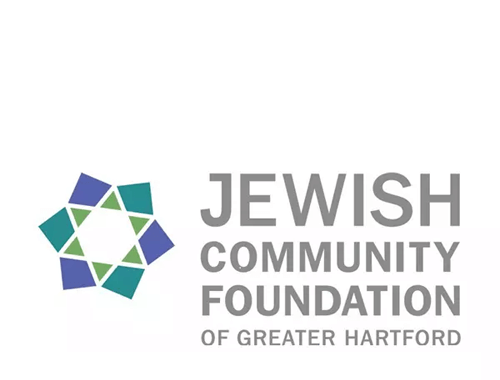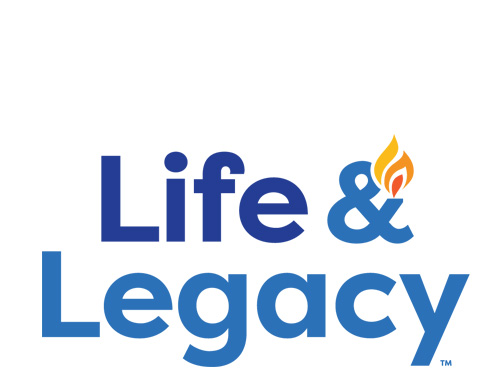- about
- academics
- current parents
- student life
- Prospective Parents
- Donate
Schechter Shavua: March 24, 2023
Partnering with Early Childhood Parents for Literacy
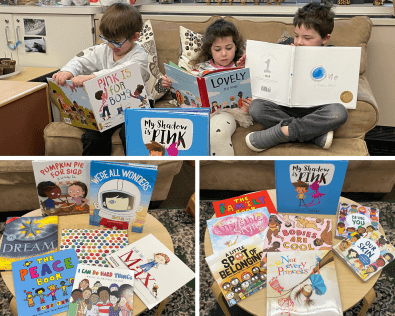 Schechter has begun revamping our Early Childhood library and will continue expanding the collection in the coming months. With Schechter’s core values of Lev Tov (Good Heart) and Klal Yisrael (Community) in mind, Early Childhood Director Robin Werner has been partnering with knowledgeable EC parents to develop a list of books that focus on the topics of inclusion, diversity, equality, kindness, goodwill and mindfulness in age-appropriate ways. All of the books will be kept in the EC Library and will be shared among all of the classes. The EC faculty is so excited to expand the collection to include more updated, relevant and impactful material.
Schechter has begun revamping our Early Childhood library and will continue expanding the collection in the coming months. With Schechter’s core values of Lev Tov (Good Heart) and Klal Yisrael (Community) in mind, Early Childhood Director Robin Werner has been partnering with knowledgeable EC parents to develop a list of books that focus on the topics of inclusion, diversity, equality, kindness, goodwill and mindfulness in age-appropriate ways. All of the books will be kept in the EC Library and will be shared among all of the classes. The EC faculty is so excited to expand the collection to include more updated, relevant and impactful material.
Middle School Science Comes Under the Microscope
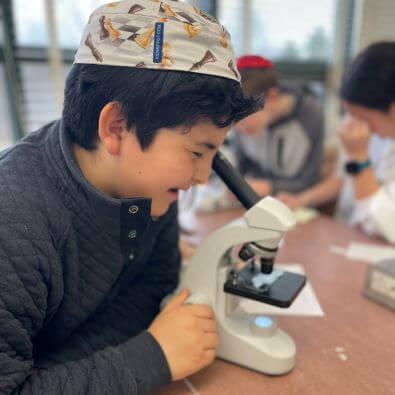 In Amirim(8th grade) science, students are learning about traits and inheritance. They recently dissected flowers to investigate whether or not they could use plants to study inheritance in people. Students examined the different reproductive parts of a flower, drew diagrams of their findings, and reassembled the parts into a labeled diagram. In discussion afterwards, students considered similarities and differences in plants and humans to come to a conclusion about whether plants could be used to study inheritance in people.
In Amirim(8th grade) science, students are learning about traits and inheritance. They recently dissected flowers to investigate whether or not they could use plants to study inheritance in people. Students examined the different reproductive parts of a flower, drew diagrams of their findings, and reassembled the parts into a labeled diagram. In discussion afterwards, students considered similarities and differences in plants and humans to come to a conclusion about whether plants could be used to study inheritance in people.
Students in 6th and 7th grade science began their unit on life science by learning how to properly and safely use and move microscopes. They learned to prepare wet-mount slides and how to apply cover-slips in order to minimize air bubbles in their samples. They used the different objective lenses on their microscopes to see the letter "e" at different magnifications in preparation for viewing cheek and skin cells in later lessons.
Click HERE to see pictures of 8th and 6-7th science labs.
Judaic Studies in Lower School through Sights, Smells, and Emotions
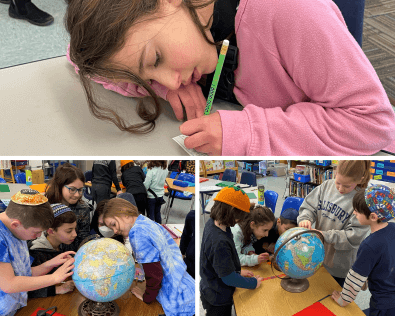 As a part of their Parashat Hashavuah learning, the Ilanot class (Kindergarten) created their own incense, similar to the incense that was burned in the mishkanfor last week's parashat Vayekel-Pekudei . When they light the incense and see the smoke cloud, students can feel G-d's presence and ready themselves for their own tefillah. Each week, students participate in a tangible creative activity linked to the weekly torah portion.
As a part of their Parashat Hashavuah learning, the Ilanot class (Kindergarten) created their own incense, similar to the incense that was burned in the mishkanfor last week's parashat Vayekel-Pekudei . When they light the incense and see the smoke cloud, students can feel G-d's presence and ready themselves for their own tefillah. Each week, students participate in a tangible creative activity linked to the weekly torah portion.
Anafimstudents (gr. 1-2) made mini Shushan, the city in current Iran where the Purim story took place. Students examined the architecture inspired by the Persian empire, including the shapes of the domes, doorways, and windows, then created their our own mini-cities out of recyclables and paper.
In Alim’s(gr. 3-4) recent Israel unit, students first studied its geography, examining a globe to learn about the countries and bodies of water surrounding Israel. They learned about other important capitals around the world and discussed the commonalities these capitals share with Jerusalem. Their focus on Jerusalem led to conversations about what makes this city so important to Jewish people worldwide. While learning about the Kotel, the students wrote individual notes and prayers that Schechter 8th graders will soon bring to Israel to be inserted in the Kotel.
Check out the STEAMfest Highlights Video!
Our Purim STEAMfest was a wonderful way to engage students in Science, Technology, Engineering, Arts, and Mathematics... all while celebrating the holiday of Purim. If you missed our story about it, you can find it HERE. Now presenting... a video of STEAMfest highlights!
Parashat Vayikra—Why the Small Alef?
 Scattered throughout the Torah are a few oddly-sized letters, some enlarged and some reduced. The most famous enlarged letters are probably found in the Shema—the ayin in its first word and the dalet in its last. The first word of this week’s parashah contains a small alef:“Vayikra el-Moshe, va-yedaber Adonai eilav”—God called out to Moses and spoke to him. Why is the alef of that first word diminished in size?
Scattered throughout the Torah are a few oddly-sized letters, some enlarged and some reduced. The most famous enlarged letters are probably found in the Shema—the ayin in its first word and the dalet in its last. The first word of this week’s parashah contains a small alef:“Vayikra el-Moshe, va-yedaber Adonai eilav”—God called out to Moses and spoke to him. Why is the alef of that first word diminished in size?
Rabbi Meir of Rothenberg, a 13th century German commentator, offers a beautiful interpretation based on the fact that Moses is frequently described as a humble man. He points out that without the small alef, the verse reads “Vayiker el-Moshe.” “Vayiker” comes from the root “to happen.” According to Rabbi Meir, Moses wanted the verse to say that God just encountered him by coincidence—that God did not choose to single him out. God refused, but did allow Moses to shrink the alef as a way of hinting at his request.
This interpretation of the small alef offers a beautiful lesson. One of Moses’s most emblematic traits was his humility, but in this case, he may have been too humble. As Maimonides teaches, seeking the spotlight is wrong, but so is avoiding it at all costs; we need to find a balance. When our actions are just and our desire is to serve our community, then we can speak of being called to do something important—a true kriah (with an alef ). We shouldn’t diminish the significance of important work by saying that “It just happened.” True service is not just a mikreh, a coincidence. May we all be blessed, like Moses, to be called, and to hear a calling—and to be proud of our role in making a difference.
Shabbat shalom,
Rabbi Jonathan Berger
Head of School
Question for the Shabbat table:
1. Can you think of other biblical characters who may have been too humble?
2. How do you find the balance between humility and pride? Are there situations in which it’s harder for you to find the right balance?
Solomon Schechter Day School
of Greater Hartford
26 Buena Vista Road
West Hartford, CT 06107
© Solomon Schechter Day School of Greater Hartford | Site design Knowles Kreative

